Make your tasks so much easier
A mouse is a handy tool, but point-and-click is a waste of time. You knew that, so you went and learned the best keyboard shortcuts for Office and Windows already.
But maybe some repetitive tasks don’t have shortcut keys. Wouldn’t it be great if you could create your own keyboard shortcuts in Microsoft Office? Well, you can.

How to Create Keyboard Shortcuts in Microsoft Office
Let’s go through these steps in Word first. The steps are identical in Excel and PowerPoint on the desktop. Scroll down to see how to do this in Outlook.
- Right-click on any grey space in the ribbon area and select Customize the Ribbon.
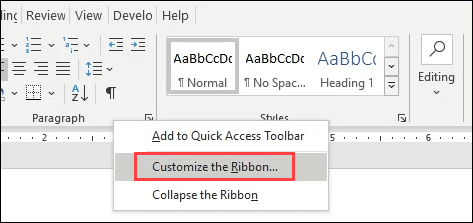
- The Word Options window will open. Select Customize next to Keyboard shortcuts near the bottom of the window.

- The Customize Keyboard window will open. Look in the Categories area to narrow down to a tab which has the command you want to create a shortcut for. That tab’s commands will show in the Commands area on the right. Select the command you want.
In this example, we’ve selected FileSendPdf, as it would be very helpful to send a Word document as a PDF with a simple keystroke combination. If the command already has a keyboard combo, it will show in the Current keys area.
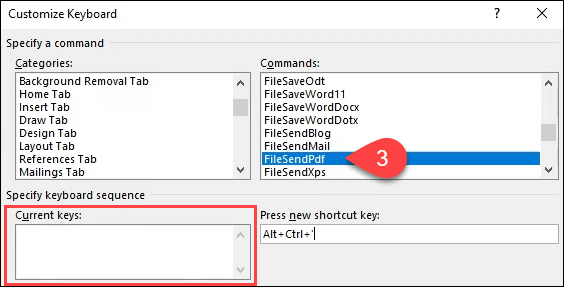
- To set a new shortcut key combination, place the cursor in the Press new shortcut key field, then press the key combo you want to use on your keyboard. Make a note of what shows under the Current keys area next to Currently assigned to. If anything but [unassigned] shows there, try another key combo.

- To use this key combo for all future documents, leave Normal.dotm selected in the Save changes in box. To apply the key combo to only this document, choose it in the drop-down box.
- Select the Assign button to apply the settings, then close the Customize Keyboard window. Press OK to close out the Word Options window. Try your new keyboard shortcut combination.

The FileSendPdf shortcut will automatically convert the document into a PDF, create a new email message in Outlook, attach the PDF, and give the email a Subject. One keystroke instead of a dozen or more point-and-clicks with a mouse is an incredible timesaver.
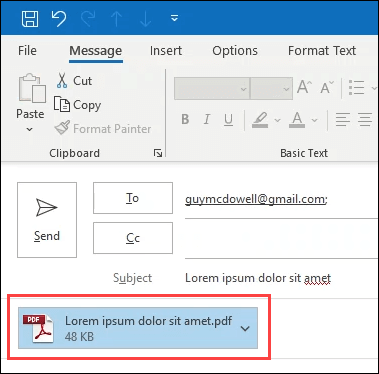
How to Clear Custom Keyboard Shortcuts in Microsoft Office
You may wish to get rid of all the custom keyboard shortcuts you’ve made in an Office app. It’s simple to do.
- Right-click on any grey space in the ribbon area and select Customize the Ribbon.
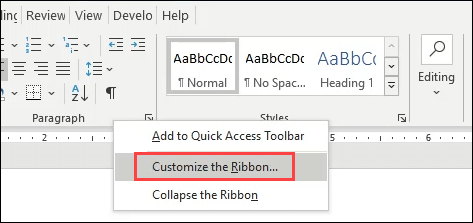
- The Word Options window will open. Select the Customize button in the bottom-left area of the window. The Customize Keyboard window will open.
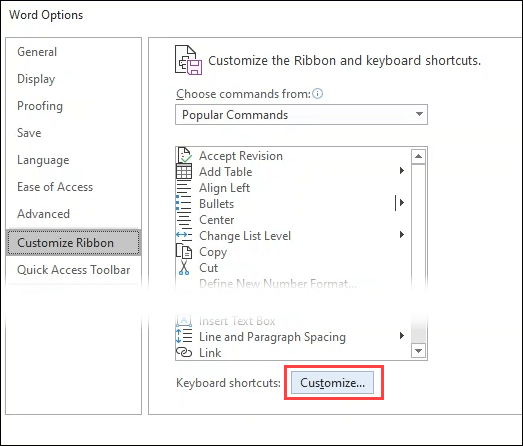
- To remove the key assignments from all future documents, leave Normal.dotm selected in the Save changes in drop-down. To remove them only from this document, choose the document in the dropdown instead. Near the bottom-left, select the Reset All button.

- It will ask, Are you sure you want to reset the key assignments? This action will remove all keys currently assigned to macros and styles in Normal.dotm. Note that at the end of that warning, it will read either Normal.dotm or the document you’ve selected. Select Yes to confirm the reset.

How to Create Keyboard Shortcuts in Microsoft Outlook
Of all the Microsoft Office apps, Outlook is probably the one in which you spend the most time. It makes sense to create some custom keyboard shortcuts to get things done faster.
Unfortunately, since Outlook 2016, it doesn’t allow you to make keyboard shortcuts as we can in Word, Excel, and PowerPoint. So what are your options?
It’s a workaround, but you can create Quick Steps and assign key combinations to them. This won’t give you the ability to create a shortcut key combo for everything in Outlook, but it can meet most of your needs. There is a limit of nine key combos that you can assign to custom Quick Steps.
- Select Create New in the Quick Steps section of the Home tab in Outlook.

- The Edit Quick Step window will open. Enter a descriptive name in the Name field.
- Choose from one of the predefined actions in the Choose an Action drop-down menu. In this example, let’s go with Mark as read.

- String actions together by selecting the Add Action button under the previous action.
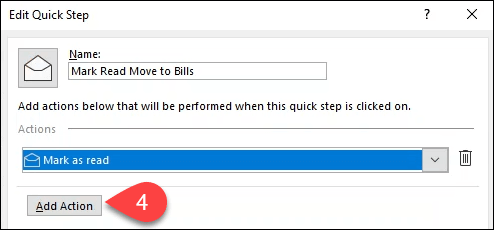
- Select Move to folder.
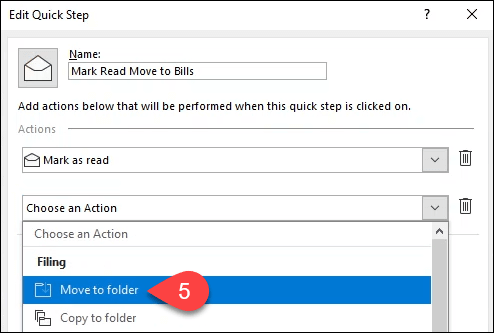
- The Select Folder window will open. Find and select the folder to which you want this Quick Action to move the email. We select the folder Bills for this example. Select OK to close the window.

- Select a key combo in the Shortcut key drop-down. Note that it’s limited to nine selections.
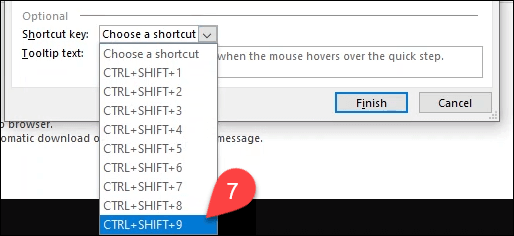
- Add a description of what the Quick Step does in the Tooltip text box. When you hover over the Quick Step later, this will appear to remind you of what it does.
- Select Finish to complete creating the Quick Step. You’ll now see the Mark Read Move to Bills Quick Step in the Outlook ribbon. Test it using the shortcut key combo you chose in step 7.

If you want to go a step further, you can create Outlook Desktop shortcuts using command line switches to make common tasks easier to do.
Practice Your Keyboard Shortcuts
Now you can create your own Microsoft Office shortcut keys. Print out a list of your most-used shortcuts and keep them beside your monitor. After a few days, you won’t need the cheat sheet anymore. Add in the command line switch shortcuts and it will boost your Microsoft Office productivity in no time.





